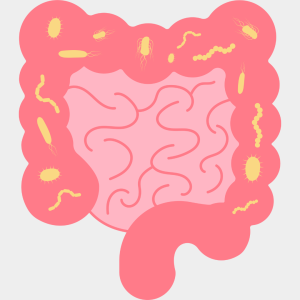We’ve all heard about probiotics—the beneficial bacteria that play a crucial role in gut health. But what about postbiotics? These emerging powerhouses are the metabolites or bioactive compounds produced when probiotics break down dietary fibers or other nutrients in the gut. Their synergy with probiotics is a fascinating and essential component of maintaining optimal health.

The Dynamic Duo: Probiotics and Postbiotics
Think of probiotics as workers in a factory and postbiotics as the finished products they create. These “products” include short-chain fatty acids (SCFAs), enzymes, peptides, and vitamins that benefit the body in countless ways. For example, SCFAs like butyrate fuel colon cells, reduce inflammation, and strengthen the gut barrier, safeguarding it from harmful pathogens (Aguilar-Toalá et al., 2018).
Probiotics and postbiotics don’t just coexist—they work hand-in-hand. Postbiotics create an environment that enables probiotics to thrive. They help maintain the gut’s pH balance, produce antimicrobial substances to combat harmful bacteria, and support the growth of beneficial microbes (Taverniti & Guglielmetti, 2011). This positive feedback loop enhances the overall ecosystem of the gut microbiome.
Enhancing Gut Health with Postbiotics
The benefits of postbiotics extend beyond simply supporting probiotics. Research has shown that postbiotics can strengthen the intestinal barrier, reducing the risk of harmful toxins and microbes entering the bloodstream. They also help modulate the immune system, reducing chronic inflammation and protecting against illnesses like irritable bowel syndrome (IBS) and metabolic disorders (Bajpai et al., 2022).
One particularly exciting discovery is how postbiotics influence the production of beneficial gut bacteria. They act as signaling molecules, encouraging the growth of probiotics like Lactobacillus and Bifidobacterium. This symbiotic relationship ensures that the gut remains a thriving hub of activity, promoting better digestion, nutrient absorption, and overall health (Aguilar-Toalá et al., 2018).
Fueling the Synergy: Your Role
So how can you support this dynamic duo in your gut? A diet rich in prebiotics—fibers found in foods like bananas, onions, garlic, and whole grains—provides the perfect “fuel” for probiotics to produce postbiotics. Fermented foods like yogurt, kefir, and kimchi are excellent sources of both probiotics and their postbiotic byproducts.
For those looking for a targeted approach, postbiotic supplements are emerging as a promising option to boost gut health directly. These supplements provide concentrated forms of beneficial metabolites that work alongside your existing gut bacteria to enhance overall well-being.
Conclusion
The interplay between probiotics and postbiotics highlights the intricate ecosystem within our gut. Together, they form a synergistic relationship that supports digestion, immunity, and the gut barrier’s integrity. By nurturing this partnership through a balanced diet and possibly supplementation, you can unlock the full potential of your gut microbiome.
References
- Aguilar-Toalá, J. E., Garcia-Varela, R., Garcia, H. S., et al. (2018). Postbiotics: An evolving term within the functional foods field. Trends in Food Science & Technology, 75, 105-114. https://doi.org/10.1016/j.tifs.2018.03.009
- Taverniti, V., & Guglielmetti, S. (2011). The immunomodulatory properties of probiotics: A potential tool for health optimization. Beneficial Microbes, 2(4), 315-333. https://doi.org/10.3920/BM2011.0033
- Bajpai, A., Nadella, S., & Wang, T. (2022). Postbiotics: Current trends in health and wellness applications. Journal of Functional Foods, 89, 104915. https://doi.org/10.1016/j.jff.2021.104915


